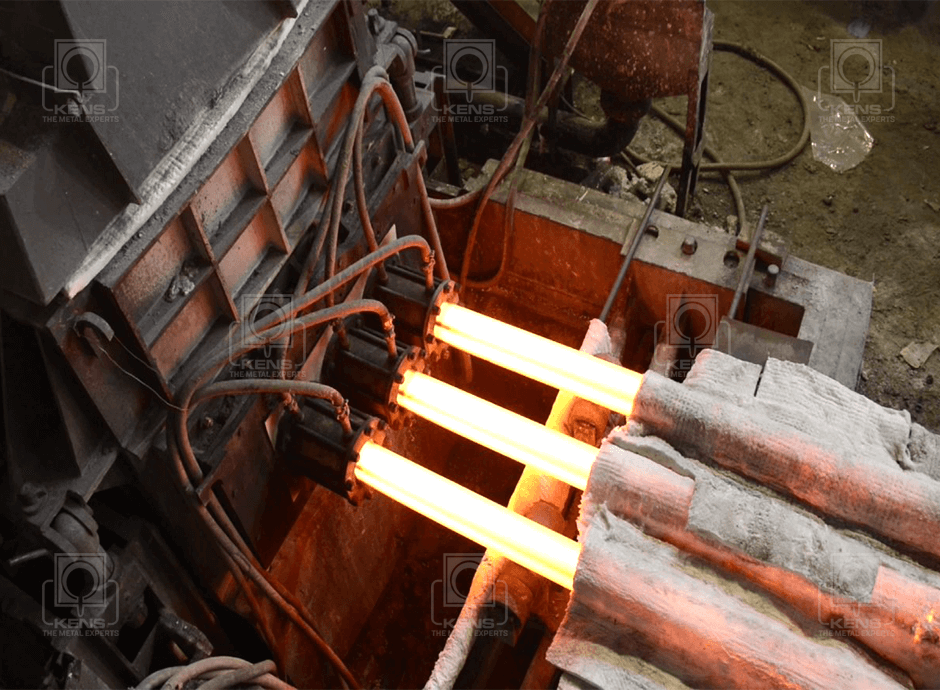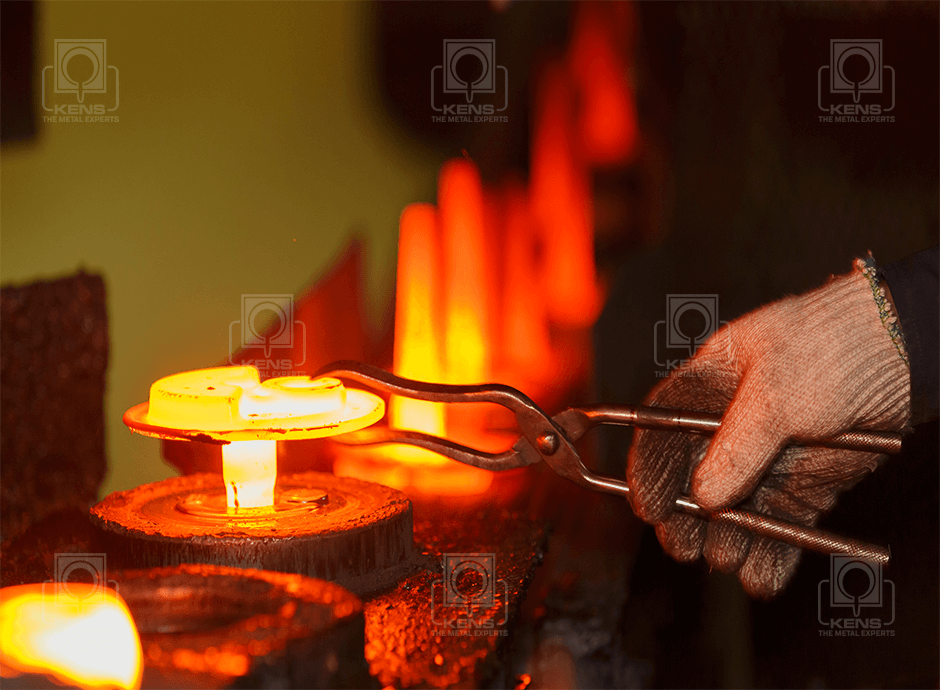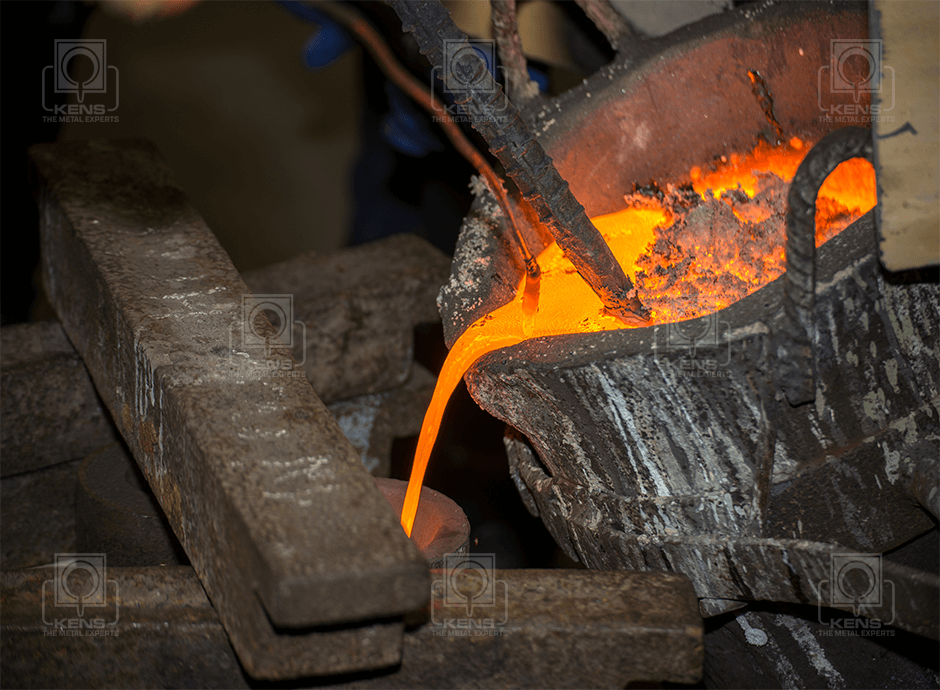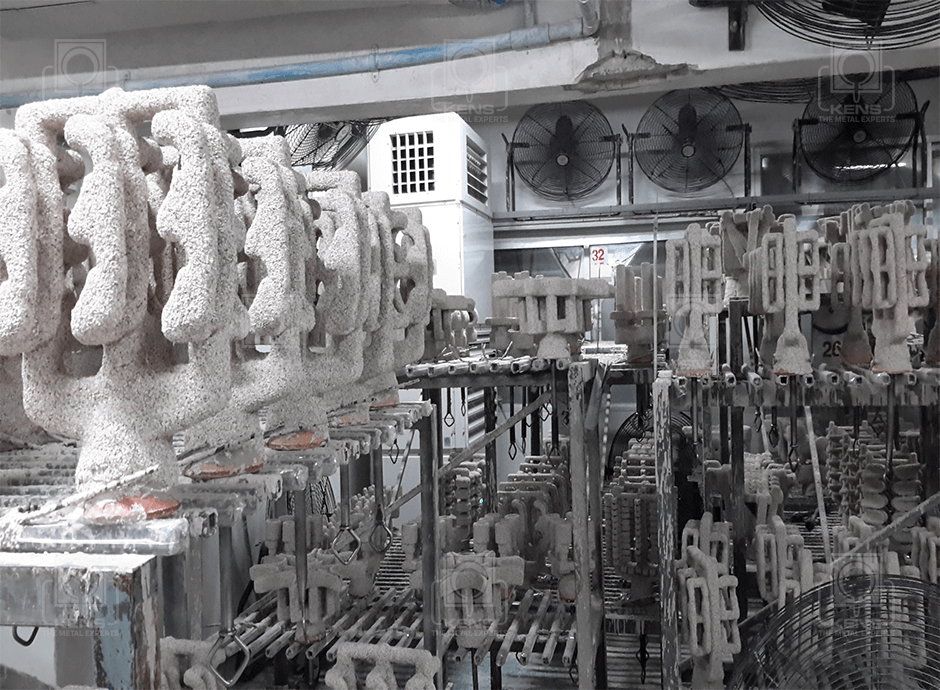Continuous Casting is the process whereby molten metal is solidified into a "semifinished" slab for subsequent rolling in the finishing mills. It allows lower-cost production of metal sections with better quality, due to the inherently lower costs of continuous, standardised production of a product, as well as providing increased control over the process through automation. This process is used most frequently to cast steel (in terms of tonnage cast). Aluminium and copper are also continuously cast.

Sand Casting is a metal casting process characterized by using sand as the mold material. The mixture is moistened, typically with water, but sometimes with other substances, to develop the strength and plasticity of the clay and to make the aggregate suitable for molding.

This process consists of injecting under high pressure a molten metal alloy into a steel mold (or tool). This gets solidified rapidly (from milliseconds to a few seconds) to form a net shaped component. It is then automatically extracted.

Gravity Casting is competitive casting method when production quantity is relatively small or when heat treatment is needed to improve the mechanical properties. This casting method gives better tolerances and surface finish than sand casting. Molten aluminium is poured into a metallic tool. It is a repeatable casting process used for non-ferrous alloy parts, typically aluminium, Zinc and Copper Base alloys.

Investment Casting is an industrial process based on lost-wax casting (modern investment casting), one of the oldest known metal-forming techniques. In its earliest forms, beeswax was used to form patterns necessary for the casting process. Today, more advanced waxes, refractory materials and specialist alloys are typically used for making patterns. Investment casting is valued for its ability to produce components with accuracy, repeatability, versatility and integrity in a variety of metals and high-performance alloys.
